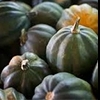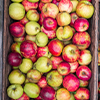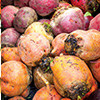
Featured Produce | Fall Quarterly 2020
Featured Produce: Kale
While kale's popularity may seem recent, the hearty leaf was a staple in ancient Greece and Rome and one of the most common green vegetables in Europe up until the end of the Middle Ages. A descendent of wild cabbage, the word kale hails from Scotland—where the phrase "come to kale" was a dinner invitation. Celtic travelers brought the vegetable to Europe around 600 BC, and English settlers brought kale to America in the 17th century.
Kale is a cold-hardy crop, thriving in climates with cooler nights and warm days. A cold snap, especially with a light frost, sweetens the vegetable. In the U.S., California and Wisconsin are major kale producers. While it is available year-round in some temperate climates, the peak season for kale in most areas spans June through November.
Kale, also called borecole, shares the botanical name Brassica oleracea with a long list of other veggies, like collard greens, broccoli, cauliflower, and Brussels sprouts.
Here are some popular varieties of kale:
- Curly leaved or Scots kale is the most common variety. It has a fibrous stalk and ranges from light green to dark purple. Its ruffled leaves are pungent, peppery, and sometimes a bit bitter.
- Red Russian kale leaves are flat, fringed, and shaped like oak leaves. More tender than curly varieties and perfect for salads, the leaves are soft green with a red tinge, and the woody stems are reddish-purple. This variety is sweet, mild, and slightly peppery.
- Dinosaur kale (also called cavolo nero, black cabbage, black palm, Tuscan cabbage, Tuscan kale and Lacinato) has tall, narrow, dark blue-green leaves and a bumpy, bubbly texture. It's milder, almost nutty/sweet and more tender than other varieties.
- Ornamental or flowering kale is available in green, white, pink or purple—sometimes all on the same plant. While these are edible, they are not as tasty as other varieties and are usually planted for their attractive colors and textures.
Kale is an excellent source of vitamins A and C and a good source of calcium and potassium. Like other veggies, it is also low in fat, saturated fat free, cholesterol free and low in sodium. The slightly sweet, slightly bitter cabbage taste of kale is delicious raw, sautéed, simmered, or roasted. Take care not to overcook it, though, or it may become increasingly bitter. Kale is a good side for poultry, beef, pork, cured meats, sausages, tofu, tempeh, beans, lentils, and eggs. Use it to add color, flavor and nutrients to rice and other grain, pasta, and corn dishes.
Choose kale with firm, deeply colored leaves, free of holes and browning or yellowing. Keep in mind that smaller leaves will usually be more tender and milder than large leaves. Store kale in a plastic or produce bag, with the air removed, for three to five days in the coldest part of the refrigerator. The sooner you eat the kale, the milder the flavor will be. Wash the leaves just before using and remove the tough center stalk before cooking (cut up the fibrous stalk to use in soups, much like celery).
With its distinctive, delicious taste, valuable nutrients and versatility in the kitchen, kale is a veggie worth keeping as a staple in your refrigerator. Move over lettuce! Kale is the star in this Kale Cranberry Salad.




